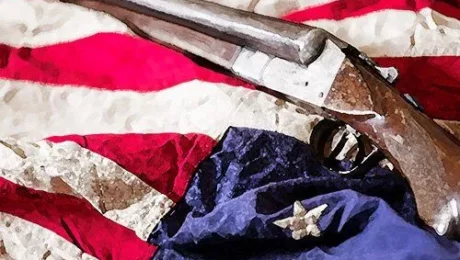The Controversy Surrounding Gun Show Bans: Balancing Security and Individual Rights
Title: The Controversy Surrounding Gun Show Bans: Balancing Security and Individual Rights
Gun shows, events where firearms enthusiasts buy, sell, and trade weapons, have been a subject of intense debate, with proponents emphasizing Second Amendment rights and opponents calling for stricter regulations to enhance public safety. The discussion surrounding gun show bans reflects the delicate balance between individual freedoms and collective security, raising critical questions about how societies can best navigate the complexities of firearm sales.
Background:
Gun shows have long been a focal point in the broader conversation about gun control. Advocates argue that these events are essential for law-abiding citizens to exercise their Second Amendment rights, allowing them to access firearms legally and responsibly. However, opponents express concerns about the potential for unregulated sales, lack of background checks, and the possibility of firearms falling into the wrong hands, particularly individuals with criminal intent or mental health issues.
Advocates of Gun Show Bans:
Those in favor of banning or imposing strict regulations on gun shows often cite public safety as their primary concern. They argue that the lack of standardized background checks and the ability to purchase firearms without scrutiny create an environment ripe for abuse. Additionally, opponents of gun shows express worry about the so-called “gun show loophole,” which allows private sellers at these events to sell firearms without conducting background checks, a practice not allowed for licensed dealers.
Second Amendment Concerns:
Proponents of gun shows emphasize the importance of upholding individual rights. They contend that the right to buy and sell firearms is protected by the Second Amendment and that responsible, law-abiding citizens should not face restrictions on their ability to engage in legal transactions. They argue that imposing bans or stringent regulations infringes upon personal freedoms and creates unnecessary barriers for those who wish to purchase firearms legally.
Potential Compromises:
Finding middle ground in the gun show debate is a challenge, but there are potential compromises that could address both public safety concerns and Second Amendment rights. Enhanced regulations within gun shows, such as mandatory background checks for all sales, could help ensure that firearms do not end up in the wrong hands. Stricter enforcement of existing laws and closing the so-called “gun show loophole” could also address some of the concerns raised by opponents of these events.
Conclusion:
The debate surrounding gun show bans epitomizes the complexities of gun control in modern society. Balancing the need for public safety with the preservation of individual rights requires thoughtful consideration and a willingness to engage in open dialogue. While finding a comprehensive solution may be challenging, it is imperative for policymakers, activists, and citizens to work together, respecting the principles of the Constitution while also prioritizing the safety and well-being of the communities they serve. By fostering informed discussions and seeking common ground, societies can move closer to a resolution that upholds both security and individual liberties.
- Published in Articles
The Complex Terrain of CA: Understanding California Gun Laws
Title: The Complex Terrain of CA: Understanding California Gun Laws
California, renowned for its diverse landscapes and progressive policies, also stands out for its stringent gun laws. In a state where innovation and activism often go hand in hand, California’s approach to firearm regulation reflects a complex interplay between individual rights, public safety, and legislative measures. Let’s explore the intricacies of California’s gun laws, shedding light on the state’s unique stance in the broader national conversation about firearms.
Background and Historical Context:
California’s history with gun control dates back to the 1960s when a series of high-profile incidents prompted the state to enact stricter firearm regulations. Over the years, the state legislature has implemented numerous laws aimed at curbing gun violence and ensuring public safety.
Firearm Purchases and Ownership:
Acquiring a firearm in California is a meticulous process. Prospective buyers must undergo a background check, which includes a review of criminal records, restraining orders, and mental health history. Additionally, California has a mandatory waiting period and limits the purchase of handguns to one per month. Assault weapons and large-capacity magazines are strictly regulated and, in many cases, banned.
Concealed Carry Laws:
California operates as a “may-issue” state concerning concealed carry permits, meaning that local law enforcement has discretion in issuing permits. Applicants must demonstrate “good cause” to carry a concealed weapon, and the process involves rigorous background checks and firearm safety training. This stringent approach reflects the state’s commitment to balancing individual rights with public safety concerns.
Assault Weapons Ban:
California maintains one of the nation’s most comprehensive assault weapons bans, prohibiting the sale, possession, and manufacture of specific firearms categorized as assault weapons. The state also regulates modifications or features that could transform a legal firearm into an illegal assault weapon, emphasizing the state’s proactive stance in preventing gun-related incidents.
Gun Storage and Transfer Laws:
California mandates safe storage practices to prevent unauthorized access to firearms, especially in households with children. Furthermore, all private party transfers of firearms must be conducted through a licensed dealer, ensuring that background checks are completed for every transaction, even between private individuals.
Challenges and Controversies:
While proponents of California’s strict gun laws argue that they enhance public safety, critics often cite concerns about the limitations placed on law-abiding citizens’ Second Amendment rights. Striking a balance between individual freedoms and community well-being remains a central challenge, prompting ongoing debates and legal battles within the state.
Conclusion:
California’s approach to gun regulation exemplifies the state’s commitment to proactive measures aimed at curbing gun violence and ensuring public safety. The complex web of laws and regulations reflects a delicate balance between individual rights and collective security. As the national conversation about gun control continues to evolve, California stands as a unique case study, demonstrating the challenges and nuances inherent in crafting comprehensive firearm legislation in a diverse and dynamic society.
- Published in Articles
NRA files suit to defend gun owners’ privacy rights in California
https://www.lassennews.com/nra-files-suit-to-defend-gun-owners-privacy-in-california
From The Lassen County Times
The National Rifle Association Institute for Legislative Action filed a lawsuit against California on Wednesday, Jan 5, challenging a law that allows the state to disclose sensitive personal information about law-abiding gun owners to universities and any “bona fide research institute.” (more…)
- Published in Articles, SHOT Show, Uncategorized



